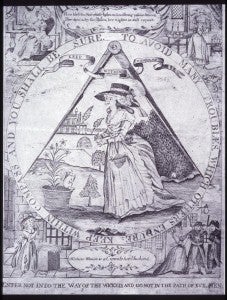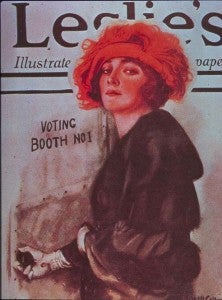
Luci Petlack, graduate student in the History department at U.C. Davis, shares her thoughts about “Draft Riots on Lexington Avenue, New York City,” from Frank Leslie’s Illustrated Newsletter.
This image depicts a scene during the July 1863 New York City Draft Riots where white rioters attacked the homes of abolitionists, set fire to the Colored Orphan Asylum and brutally assaulted black individuals. These rioters targeted symbols of Republican Party rule who they viewed as the instigators of the war. Numbers vary, but scholars estimate about 500 deaths (mostly rioters) and well over $1 million property damage.
Two years into a war that Americans, North and South, thought would end in a few months, the Union government turned to the draft to enlist more men in their army. The Conscription Act that began the draft allowed individuals to pay a $300 bounty for a replacement. For members of the working class, $300 was about one year’s salary making the bounty out of their reach. The draft itself upset many people, but riots exploded in the summer of 1863 because of the class tensions the bounty exacerbated. Workers, many of them immigrants, felt the rich men of the North, namely Republicans, were using the lives of the poor to fight the war. Newspapers around the country covered these draft riots with the same interest as many of the battles during the war.
This image is great for learning and teaching about the American Civil War for a few reasons. The Civil War immediately brings battlefields and generals to mind. This image shows the oft-neglected home front. Interestingly, it wasn’t just on the fields of Gettysburg and Vicksburg that violence emerged because of the war. By this point in the war, violence had become the norm, regardless of an individual’s status as soldier or civilian. The whole country was truly involved. Second, this image shows that there were northerners opposed to the war. Oftentimes students create a dichotomy between the slave-owning South and the abolitionist North – a split that never existed. It is important for students and teachers to understand the complicated tapestry of sentiments during the war.
Further Reading:
- Iver Bernstein, The New York City Draft Riots: Their Significance for American Society and Politics in the Age of the Civil War (New York: Oxford University Press, 1990). Bernstein argues that the riots were an effort of working-class individuals to assert their power against their competition (black laborers) and against members of the higher classes.
- Adrian Cook, The Armies of the Streets: The New York City Draft Riots of 1863, (Lexington, KY: University Press of Kentucky, 1974). Cook portrays the insurrection as an outburst by the lower classes against government control.
- James McCague. The Second Rebellion: The Story of the New York City Draft Riots of 1863. (New York: Dial Press, 1968). McCague believes that Irish struck out at rich whites and blacks with a comparable hatred, expressing their dissatisfaction with labor opportunities and chances for success.
- Jack Tager, Boston Riots: Three Centuries of Social Violence (Northeastern University Press, 2001), 133-139. This short section provides details of the draft riots in Boston.
Luci Petlack is a doctoral candidate in the History Department at the University of California, Davis. Her research interests include black American history, race relations and the American Civil War. Her dissertation, “A Dilemma of Civil Liberties: Blacks under Union Military Control, 1861-1866,” looks at the effects of military occupation and martial law on black communities during the Civil War in Baltimore, Maryland; New Orleans, Louisiana and Cincinnati, Ohio.
















